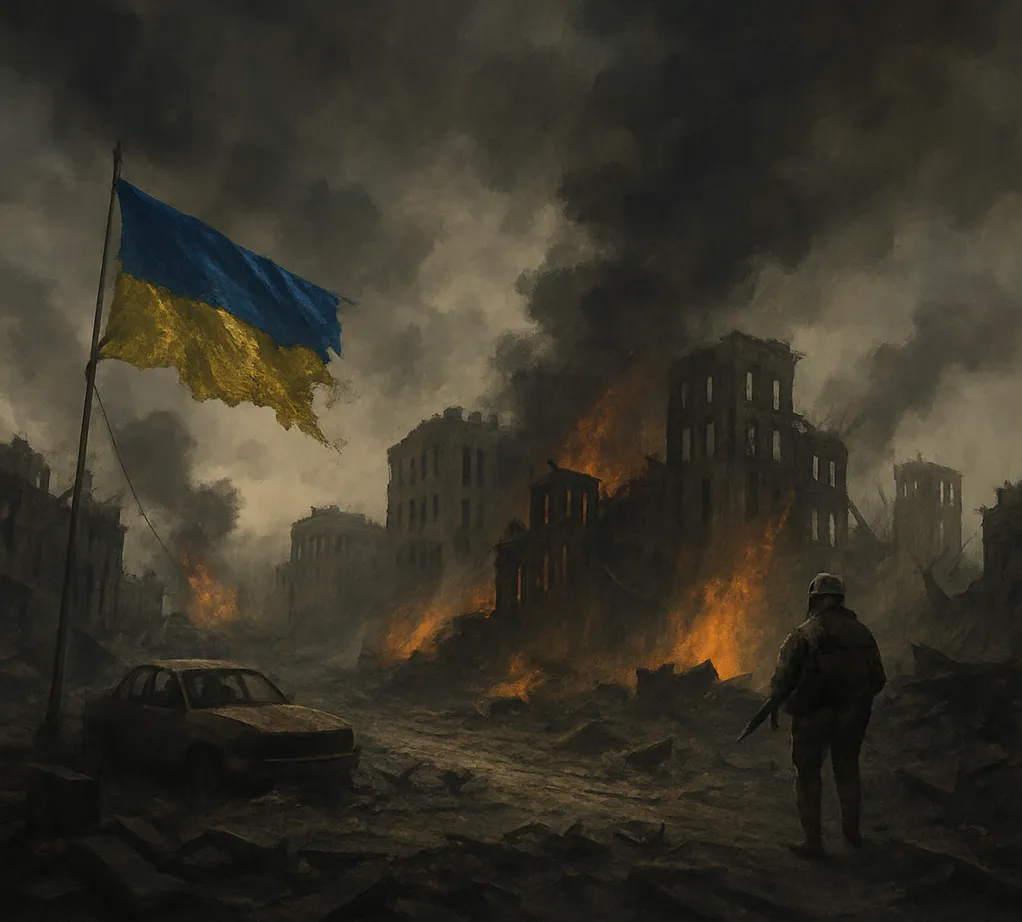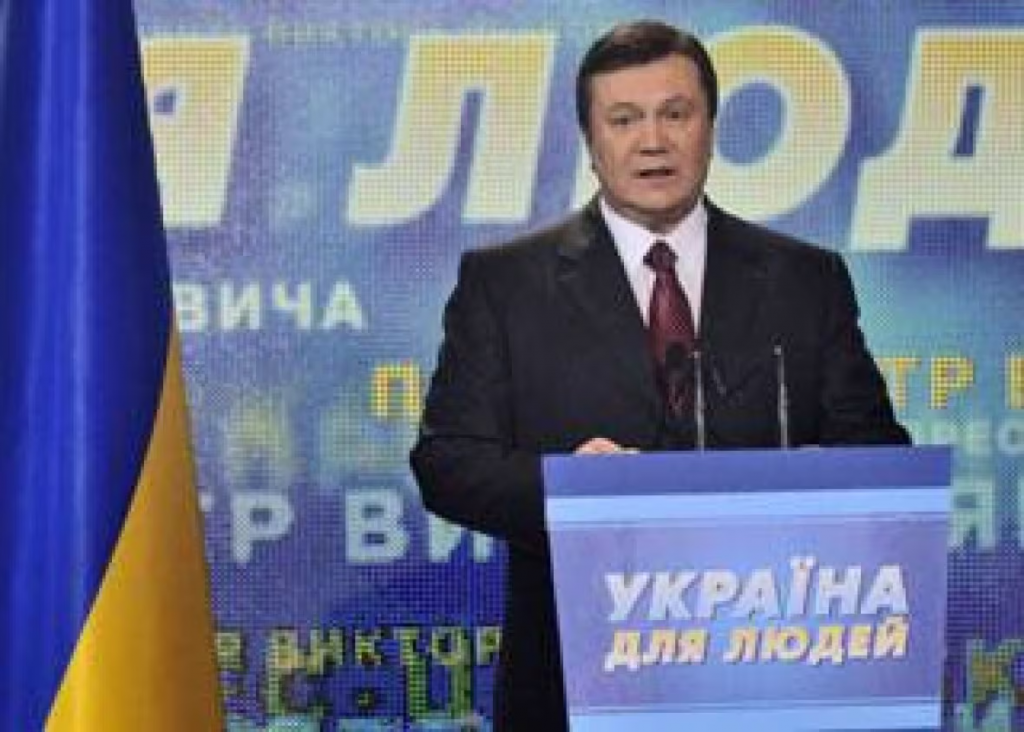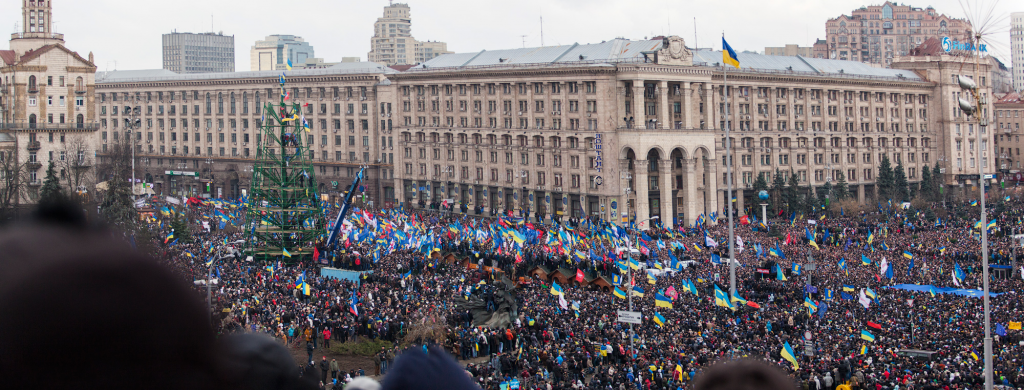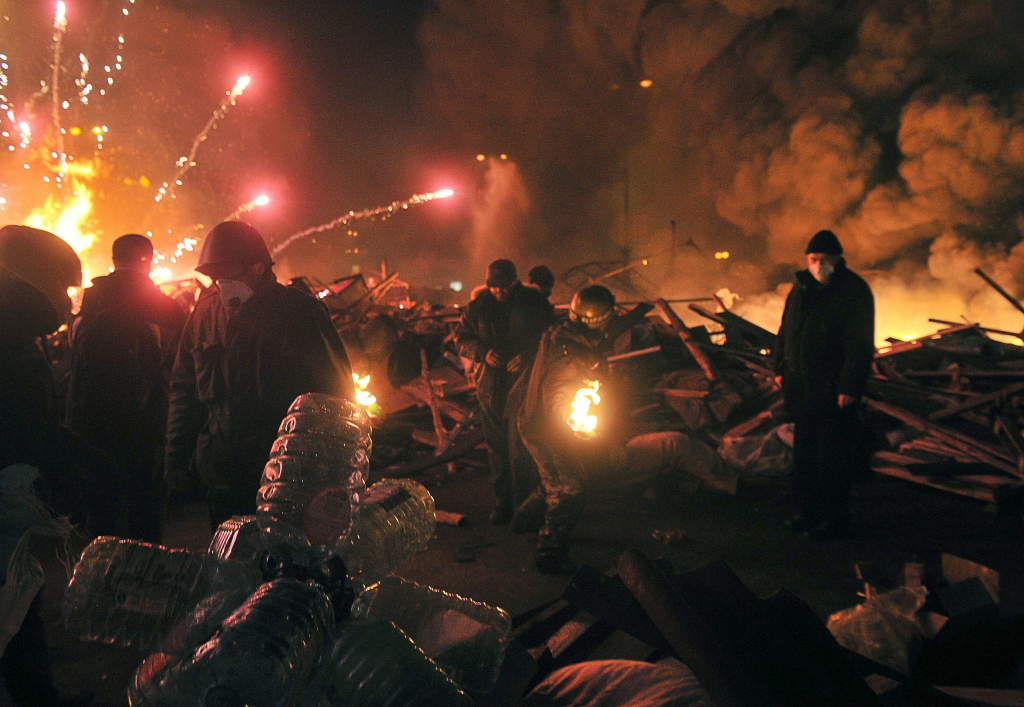Ukraine 2000–2022 | How to Destroy a Nation: Part 1
A Step-by-Step Guide
The Russo-Ukrainian War is a unique event in human history.
It is the only recorded case of a social, political, and military event that happened without causes.
It just appeared out of thin air, like magic.
And even if a cause exists, it is entirely the result of a man who woke up one day with the intention of recreating the Soviet Union by invading all of Europe—up to Lisbon.

The ironic part is that it happened right at the conclusion of the COVID pandemic, a moment in history when we were told, day and night, that we had to just believe in Science and in nothing else. But after February 2022, with the Russian invasion of Ukraine, politicians and journalists were able to skillfully use every type of media to shift our society away from rational thinking and toward an animistic mentality.
Anyone who dared to challenge this new faith was publicly laughed at and labeled as a Putinist. In the worst cases, job contracts were canceled, and life threats were made.
These events clearly demonstrate how easily any free, democratic society can slide toward dictatorship simply by discouraging critical thinking and spreading biased news—or, in some cases, blatant lies.
This mass disinformation campaign spread so effectively and quickly in Western countries because it leveraged two important aspects of human psychology. One is the embedded sense of superiority we inherited from the colonial age (I discussed this argument in my previous article). The second is the fear of an external threat. With both of these factors in place, even well-educated people found it natural to shut down their own reasoning and become part of the propaganda machine.
This article does not aim to convince the reader of anything, but rather to provide additional pieces of the puzzle that were purposely omitted by mainstream media for years. It is up to you, the reader, to form your own opinion about the tragic events that continue to unfold before our eyes.
“Be very careful: if the scientific mindset dies in the West, the risk of the horrors of the past returning increases. If we kill the scientific mindset, we risk making our freedoms pay an extremely high price.”
— Alessandro Orsini
All the historical facts listed below have been diligently linked to multiple sources added in the footnotes, as I always do in my articles. The research for these sources took many hours of my time—not only because I fact-checked them one by one, but also because I purposely gave priority to Western media outlets, most of them well-known and respected, such as The Guardian or the BBC.
For news involving Ukrainian society and its point of view, I often used Ukrainian news outlets in English, such as The Kyiv Independent or The Kyiv Post. For public positions taken by the Kremlin, I chose to reference the official government website directly, rather than relying on summaries produced by Western sources.
Note from the Author
I want to express my gratitude to Professor Alessandro Orsini and to the independent journalist Marco Travaglio for inspiring me to conduct my own research on the causes of the Russo-Ukrainian War. Throughout the article, I often use their words—translated and elaborated—without directly citing them.
Early 2000s
Ukraine is an independent country, experiencing solid economic growth, industrial development and one of the sharpest declines in poverty of any economy seen before.1 2
2004
Viktor Yanukovych, a pro-neutrality candidate3, wins the presidential election. He is later removed from power by the Orange Revolution protests in Maidan Square. These were later denounced by The Guardian as being organized and funded by United States agencies. 4
2010
Yanukovych is elected again, reflecting the public’s desire for neutrality. The elections are closely monitored and deemed fair by the OSCE.5

2013
In the U.S., Obama is re-elected with Joe Biden as Vice President. Meanwhile, the European Union offers Ukraine a trade agreement (DCFTA), seen as a first step toward EU membership. The deal is worth $4 billion.6
But Putin counters with another offer: a customs union deal with Russia, Belarus, and Kazakhstan. A German-led survey shows that the Ukrainian people are divided over choosing between the two offers.7
November 21, 2013
Yanukovych suspends the EU agreement to reconsider.
The terms imposed by Brussels and the International Monetary Fund for financial support are tough for Ukraine: they include unpopular reforms like a 40% increase in gas bills, privatizations, and cuts to welfare.8
A study from The Vienna Institute for International Economic Studies later showed that signing the DCFTA led to an 8% drop in exports to the EU, a 40% drop in imports from the EU, and a $1.5 billion increase in the trade deficit between 2013 and 2015. One major factor was that small Ukrainian businesses struggled to meet EU standards.9
Putin’s response
He lowers the price of gas for Ukraine by 35% and offers a $15 billion loan without conditions.10

The protests return
Kiev fills again with pro-Western demonstrators. The Ukrainian government deploys anti-riot police units (Berkut) who violently beat protestors to free Maidan Square. 11 The day after, protesters storm the city council.12
December 12, 2013
Yanukovych tries to ease tensions:
– He pauses the Russian deal
– Meets with an EU envoy
– Moves forward with the EU agreement13
An interesting point:
After multiple consultations with Moscow, Kiev proposes the idea of a tripartite commission to resolve differences and sign both deals, but Brussels is skeptical, and the proposal does not move forward.14
Meanwhile on the streets..
The protesters make it clear that they do not intend to leave even after the EU deal is signed, showing their distrust of the President himself.15
December 15, 2013
The EU takes a step back.16
200,000 people flood the streets to protest against Yanukovych.

On stage, stirring up the crowd, are two U.S. senators—John McCain and Chris Murphy.
“The destiny you seek lies in Europe!
People of Ukraine, this is your moment.
The free world is with you, America is with you, I am with you.”17
— U.S Senator John McCain
Also present is Victoria Nuland, a U.S. diplomat sent by the Obama-Biden administration. Nuland has served under both Democratic and Republican presidents—all except Trump. She is a supporter of American military interventions in the world for achieving foreign policy objectives.18 Her husband is Robert Kagan, a neoconservative Republican who wrote multiple books in defense of the American wars in the Middle East.19
Just two days before, in a press conference in Washington, Nuland declared:
“The United States has invested $5 billion to give Ukraine what it deserves.” 20
January 2014
Far-right associations, such as Pravyi Sektor and Svoboda, infiltrates within the peaceful protesters.21 Clashes with the police become increasingly violent. Leaders of opposition parties denounce the violent groups, trying to take distance from them.22

To calm the situation, Yanukovych proposes forming a broad coalition government, led by two opposition leaders. But by this point, the crowd is immovable. They reject the president’s offer, asking for new elections.23
February 6, 2014
An intercepted phone call (likely by Russian intelligence) is uploaded to YouTube. It captures a conversation between Victoria Nuland and Geoffrey R. Pyatt, the U.S. Ambassador to Kiev.
They openly discuss the post-Yanukovych government—as if his removal is already decided. Nuland insists on appointing Arseniy Yatsenyuk, a pro-American right-wing figure.
They also mention the involvement of UN officials to “help glue this thing”. Nuland then express all her respect for the European Union with the now-infamous:
February 20, 2014
On this day, violence escalates dramatically. More than 50 people are killed, most of them protesters.


This marks a turning point that not only leads to the fall of the Yanukovych government, but also starts a major escalation of violence in the separatist regions.
Violence calls more violence.
Death calls more death.
Given the critical importance of the events that took place on this day, the author has chosen to explore them in detail in the upcoming article.
CP
1 International Monetary Fund. Ukraine: 2003 Article IV Consultation—Staff Report; Public Information Notice on the Executive Board Discussion; and Statement by the Executive Director for Ukraine. International Monetary Fund, 2003.
2 Human Development Sector Unit Ukraine, Belarus and Moldova Country Unit Europe and Central Asia Region. Report No. 39887-UA Ukraine Poverty Update. Document of the World Bank, 2007.
3 Kyiv Post. Yanukovych: Ukraine will remain a neutral state, 2010.
4 The Guardian. US campaign behind the turmoil in Kiev, 2004.
5 OSCEPA. Yanukovych Wins Ukraine’s Presidential Election, 2010.
6 Ukrinform. IMF links loan amount to Ukraine with reforms, 2013.
7 DW. Divided loyalties, 2013.
8 The New York Times. Ukraine Blames I.M.F. for Halt to Agreements With Europe, 2013.
9 Amat Adarov, Peter Havlik. Benefits and Costs of DCFTA: Evaluation of the Impact on Georgia, Moldova and Ukraine. The Vienna Institute for International Economic Studies, 2017.
10 Kyiv Post. Russia gives Ukraine cheap gas, $15 billion in loans, 2013.
11 The Guardian. Ukraine’s bloody crackdown leads to call for sanctions, 2013.
12 BBC. Ukraine protesters storm Kiev city council, 2013.
13 The Guardian. Ukraine diplomatic battle heats up over Yanukovych EU agreement claim, 2013.
14 POLITICO. Russia behind Ukraine U-turn on EU, 2013.
15 USA Today. EU official: Ukraine’s Yanukovych will sign trade deal, 2013.
16 The New York Times. European Union Suspends Trade Talks With Ukraine, 2013.
17 The Guardian. Ukraine protesters return en masse to central Kiev for pro-EU campaign, 2013.
18 POLITICO. Victoria Nuland: The Full Transcript, 2018.
19 Spiegel International. America Remains Number One, 2008.
20 U.S. Mission to International Organizations in Geneva. Assistant Secretary Nuland Speaks at U.S.-Ukraine Foundation Conference, 2013.
21 Ivan Katchanovski. The Far Right in Ukraine During the “Euromaidan” and the War in Donbas. University of Ottawa, 2016.
22 The Guardian. Teargas and smoke bombs used as Ukrainian protesters clash with police, 2014.
23 BBC. Ukraine crisis: Yanukovych offers jobs to opposition, 2014.
24 BBC. Ukraine crisis: Transcript of leaked Nuland-Pyatt call, 2014.

